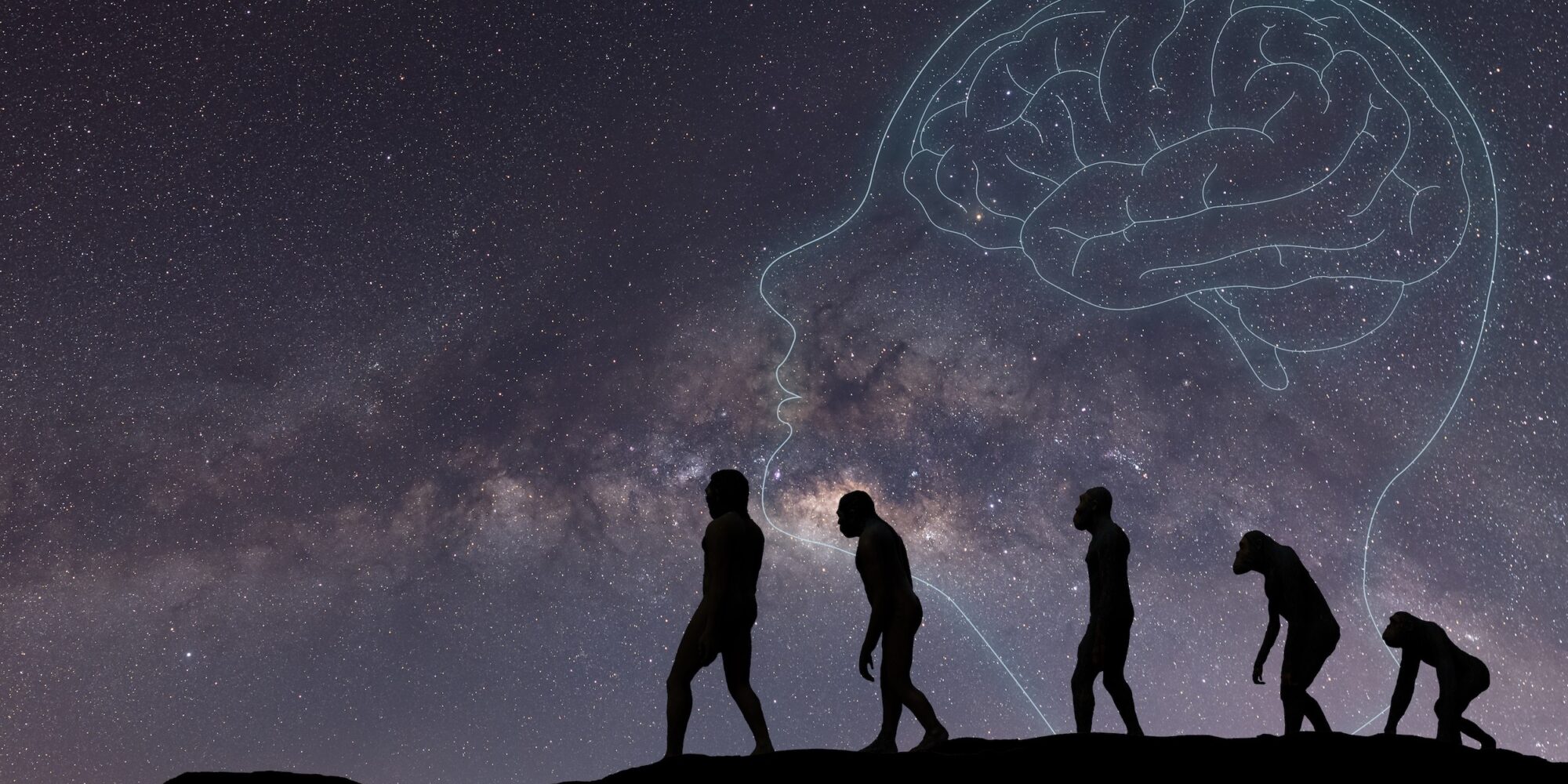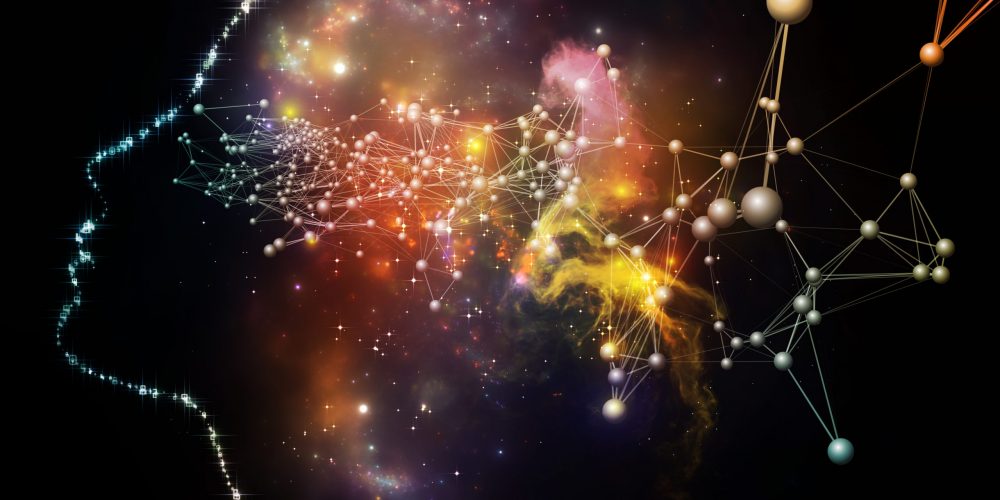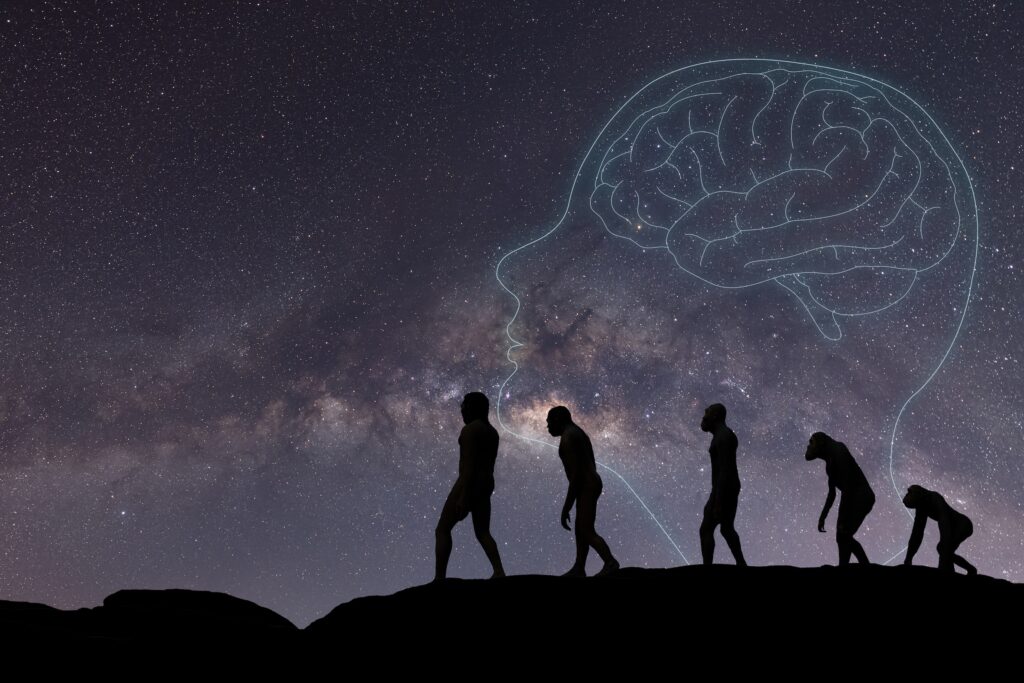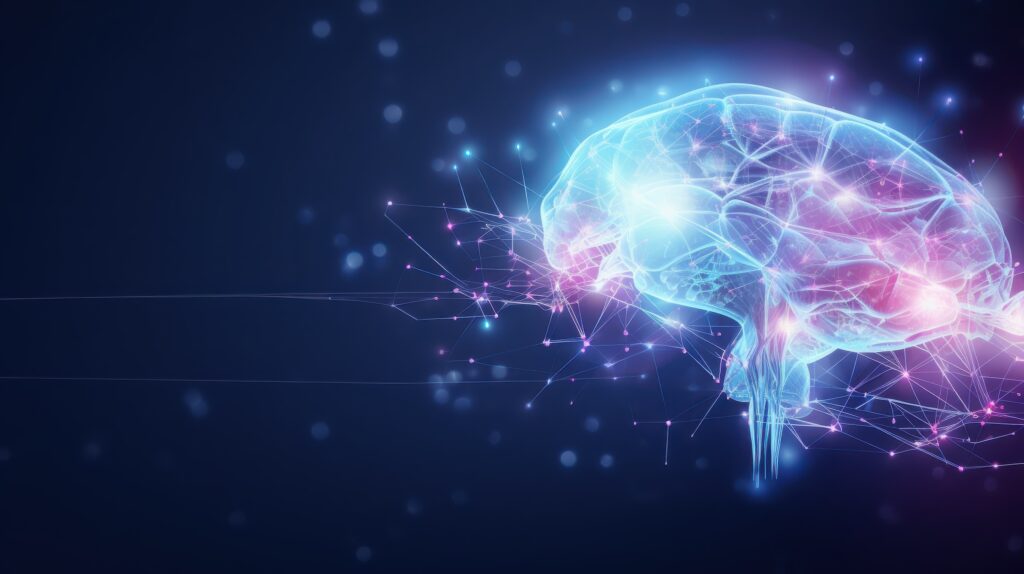Analytic Idealism and the possibility of a meta-conscious cosmic mind
Reading | Metaphysics
![]() Prof. Richard Grego, PhD | 2025-07-11
Prof. Richard Grego, PhD | 2025-07-11

Does Analytic Idealism limit the scope of its own conclusions and implications because of its adoption of realist, empirically-focused, scientific concepts and argument structures? If so, can the notion of a meta-conscious (that is, self-aware, deliberate) universal consciousness be reconciled with it? Dr. Grego argues precisely so in this critical essay.
Bernardo Kastrup’s Analytic Idealism is the most systematic, empirically responsible, and logically consistent articulation of idealism in the current literature. The purpose of this essay is to acknowledge the profound importance of Analytic Idealism in contemporary philosophy of mind, while also highlighting one aspect of Kastrup’s thought that possibly calls for more clarification since, for anyone lacking a sophisticated familiarity with Analytic Idealism, it can be confusing. This confusion involves his view on the supposedly non-meta-conscious character of “universal consciousness,” and a possible scientific bias in his thinking that unwrites this view. Given the centrality of universal consciousness to Kastrup’s entire philosophical project, these considerations are significant. Indeed, as a staunch advocate of Analytic Idealism and Kastrup’s research program myself, further clarification on these themes would benefit my own thinking and research.
Over the past few decades, Kastrup’s Analytic Idealism has assumed a prominent place in the vanguard of contemporary ontology and philosophy of mind. It presents an original contribution to a venerable tradition in the global history of ideas—spanning the western philosophical legacy from such thinkers as Parmenides, Pythagorus, and Plato, to Hegel, Schopenhauer, and Jung (whose ideas Kastrup has, in many ways, drawn from and synthesized with his own). As a scientist and philosopher, he has examined, critically and deeply, relationships between the ontological implications of physical science and the nature of consciousness. His theory of Analytic Idealism reconciles seemingly antithetical ideas like scientific realism (that descriptions of reality provided by the physical sciences are authentic representations of what reality fundamentally consists of) on one hand, with metaphysical idealism (that everything in our physical universe is actually, in an important sense, just mental) on the other. Reality, according to Analytic Idealism, is fundamentally comprised of only universal consciousness, and the physical universe described by science (along with individuated minds and their ideas about the universe and other minds) are “excitations” in this consciousness, which arise when aspects of universal consciousness—such as mental subjects (individual human beings and other conscious beings)—dissociate from identity with the whole. Through these individuated aspects of itself, universal consciousness views the rest of itself as objects of local subjective minds.
Thus, ultimately, our familiar world of material things, forces, perceptions and ideas, while predictable and useful, are elaborate illusions. We think they are real-in-themselves and separate from our own mental lives—objectively real entities that we observe at a critical distance from our subjective individuated minds. We even think that our individual existence is objectively real in this way, since we can seemingly observe and assess ourselves as objective physical entities among others. However, this physicalist belief is an illusion because, on a deeper level, all that exists is the universal consciousness in and through which every existent comes into being via an excitation in, and dissociation from, universal consciousness itself. Our complex, rich, and varied view of the physical world from the individuated perspective is, in this sense, a conceptual construct; an illusional reality which, although very helpful for our practical survival needs on a physical, individuated level, is generated by dissociation from its conscious source.
From this dissociated vantage-point, Kastrup explains, our conception of reality is like the dials, screens and meters on the dashboard of an airplane otherwise flying-blind. The dials-screens-meters and their data are abstract symbols-models-maps of the actual environment outside the airplane. This kind of second-hand symbolic information about reality is effective and useful but it is not a mirror image of the reality that it represents—and it certainly is not reality itself. Analytic Idealism therefore presents a nuanced perspective on both scientific realism and physicalism. On a pragmatic level, scientific concepts and the physical entities they posit are real in the sense that they exist as genuine aspects of universal consciousness. They are mental images in and through which universal consciousness represents and expresses itself in, through, and to, itself, but they do not have ontological standing as entities in-themselves, separate from universal consciousness (the way ripples and whirlpools are expressions of the body of water of which they are aspects—or the way characters and objects in a dream are expressions of the dreaming consciousness of which they are a part). At the most fundamental ontological level, all reality is nothing other than this consciousness [1].
In this way, Analytic Idealism addresses and resolves many of the most basic traditional problems in consciousness studies and philosophy of science: from the classical ‘hard problem’ in philosophy of mind generally to the ‘composition problem’ in recent panpsychist literature, from scientific realism/antirealism generally to the implications of the ‘measurement problem’ for quantum physics specifically. Analytic Idealism offers a means for resolving some heretofore intractable ontological dilemmas.
Further, Kastrup has brought this same logic to bear on philosophy of religion. Like science, the world’s major religious traditions provide symbols and metaphors for the dimension of existence (universal consciousness) that engenders these symbols, but which the symbols themselves can never literally mirror, let alone literally be. However, given the wide-ranging, multifarious, and imaginative scope of religious consciousness, it can generate symbols useful in some ways that scientific symbols are not [2]. This suggests that every mode of intellectual inquiry—from the physical and social sciences, to history, to literature and the arts—yields important and meaningful symbolic expressions of the universal consciousness in and through which they emerge. Analytic Idealism therefore presents one of the most promising current venues for radical philosophical and spiritual transformation (or at least an ideological basis for such transformation) in western and world intellectual-cultural history.
Universal Consciousness, meta-consciousness, and physical reality: Inconsistencies and contradictions?
Notwithstanding all the merits of his theory, however, Kastrup’s own elaborations on one of its tenets sometimes seems inconsistent with it—especially regarding its central feature: universal consciousness itself. He has stated in many places that universal consciousness is most likely not meta-conscious and that, in this sense, does not entail any personal, intentional, or self-aware aspect at its most fundamental level. While Analytic Idealism does not automatically exclude this possibility, he argues, the empirical evidence we have about what meta-conscious awareness and experience might be seems to suggest that universal consciousness is not fundamentally meta-conscious or personal in any second-order way. The reason for his drawing this conclusion is that the history of the physical universe, and the development of meta-conscious minds via biological evolution, indicates that meta-conscious mental states were not present at the inception of the universe, and therefore are not fundamental to universal consciousness itself. It took several billion years of cosmological development and biological evolution for meta-conscious individuated intellects to emerge. The development of individuated, meta-conscious identity seems, by this logic, attributable to the process of biological evolution in physical space-time [3]. Moreover, Kastrup has also doubled down on this attribution by describing the epistemic limitations of individuated meta-conscious minds in these kind-of-physicalist terms (“Just monkeys on a rock in space”) [4].
However, this portrayal of universal consciousness, meta-consciousness, and physical reality seems inconsistent with the basic tenets of Analytic Idealism. It sounds as though—despite the illusional status of the physical universe—Kastrup is nonetheless claiming that human consciousness is somehow a causal product of biological evolution occurring in space-time. This claim seems to reverse completely the actual causal direction running from universal consciousness to individuated meta-consciousness to the physical universe, as well as invert the ontological priority of universal consciousness to its physical forms. Analytic Idealism holds that the physical world is a construct of individuated meta-conscious observation, which, in turn, is an excitation of universal consciousness. So, the contention that meta-consciousness is a product of physical evolution inverts this causal process.
Of course, Kastrup has explained that there are ultimately no such causal relations at all between universal consciousness and its individuated mental and physical forms in the first place: causality in spacetime and physical reality itself are conceptual constructs—what excitations in universal consciousness look like when it observes itself from dissociated vantage-points—and ultimately involve no formal causal explanations. Explanations of meta-conscious dissociation arising via bio-chemical causal processes in spacetime are only illustrative symbols for what excitations within universal consciousness look like at the dissociated level of individuated consciousness.
However, even without causal processes, there still seems to be a kind of ontological-hierarchical contingency within universal consciousness involved here: The physical universe, although just another dimension of universal consciousness, still requires universal consciousness and individuated meta-conscious minds in order for it to exist, since the physical world is the product of meta-conscious dissociated minds within universal consciousness looking across the dissociative boundary at the rest of universal consciousness [Editor’s note: Kastrup does maintain that dissociated subjects are required for the physical world to exist as a cognitive representation, but this does not require meta-consciousness; as such, even non-meta-conscious, single-celled organisms create a physical world through their ability to perceive]. Meta-conscious individuated minds do not require a physical world for their existence (as Descartes pointed out), but the physical world requires dissociated meta-conscious minds to exist (as conscious-observer-induced Schrodinger wave-function collapse in quantum physics attests) [Editor’s note: Kastrup maintains that the physical world, as a cognitive representation, does require dissociated minds, but not necessarily meta-conscious one; indeed, Kastrup does not require a consciousness-causes-collapse interpretation of quantum observation, in that epistemic interpretations of collapse are consistent with Analytic Idealism]. Individuated meta-conscious minds and the physical world, in turn, are excitations within universal consciousness, and their existence is thus contingent upon the existence of universal consciousness. However, the existence universal consciousness does not require the existence of these aspects of itself (To use one of Kastrup’s own illuminating analogies: The ripples and whirlpools in water require water to exist, but the water does not require ripples and whirlpools to exist). So, describing the emergence of individuated consciousness as being, on any level, a product of physical evolution still seems to contradict the basic tenets of Analytic Idealism [Editor’s note: according to Kastrup, what we call physical evolution, just as anything else physical, is a cognitive representation of mental processes; in other words, physical evolution is merely what mental processes look like when perceived by dissociated subjects; as such, individuated consciousness is not a product of physical evolution, but a product of the mental processes that are cognitively represented in us as physical evolution].
Of course, Kastrup is well aware of these issues and has addressed them in the literature and media. He explains that the apparent contradiction between his physicalist ascriptions and idealist convictions is a kind of necessary evil: physical and causal concepts—indeed, any concepts—are only symbols, maps, and models of a universal consciousness that remains, ultimately, irreducible to anything except pure conscious experience itself. He uses the concepts and symbols of the physical sciences to talk about Analytic Idealism and universal consciousness because, like all concepts, they are the only way to describe, in a culturally comprehensible way, the universal consciousness that transcends any literal description. Every kind of analysis, reflection, or description, necessitates this kind of ontological misdirection.
However, there still remains the question of why he uses these particular concepts and symbols to describe universal consciousness and its manifestations—why scientific symbols and concepts instead of others? The scientific method (like the entire rationalist Enlightenment project that inaugurated it) was developed precisely to eliminate consideration of things like consciousness from its epistemic purview. Scientific models of reality, as Husserl famously pointed out, have been constructed in such a way that subjective phenomenological consciousness is (at least technically) irrelevant to any object under investigation. Science uses, but remains oblivious to, those aspects of existence most integral to meta-conscious experience: things like subjectivity, intentionality, self-awareness, and reflexive contemplation. Using physicalist models of reality (like biological evolution in spacetime) to speculate about the nature of universal consciousness would thus tend to automatically preclude the possibility of attributing meta-conscious dimensions to universal consciousness. One wonders whether applying other, non-scientific, models (say Hindu cosmology, primal mythologies, Hegelian metaphysics, Kabbalah ontology, Romantic era poetry, etc.) that portray human minds as divinely incarnate avatars, integral to cosmic mind or universal consciousness, would perhaps lead Kastrup to much different conclusions about universal consciousness and its capacity for meta-consciousness. Choosing, instead, to view universal consciousness through the lens of scientific-materialist just-so-stories, which portray human consciousness as an evolutionary by-product of “monkeys on a rock in space,” seem to rule-out these other potentialities in advance.
Moreover, it is also curious (particularly given his extremely cogent insights on religious thought [2]) that Kastrup relies on such abstract scientific models for understanding or describing universal consciousness when there are deeper, and presumably much more accurate, sources of insight available. The world’s perennial spiritual traditions are replete with explorations of consciousness that, rather than confining themselves to abstract intellectual speculation found in the physical sciences, attempt to access the source of universal consciousness by experiential, phenomenological means. Direct experience of pure awareness via meditation, trance-possession, mystical intuition, prayer, psychedelics, near-death or out-of-body experience, etc., do much to permeate the dissociation that separates individuated minds from universal consciousness. Since, by transcending and dissolving the dissociative barriers between individuated consciousness and universal consciousness, this kind of phenomenological encounter engages universal consciousness directly (and more deeply-intimately than scientific analysis), it would seem like a much better basis on which to speculate about the nature of universal consciousness. (To employ another of Kastrup’s analogies here: speculating about universal consciousness via the abstractions of physical science, instead of via direct conscious experiences, is like speculating about nature outside of the blindly-flying airplane via the data from its dials and meters, instead of opening its cargo door and looking out directly at the sky, clouds, weather, and ground below). And what these direct phenomenological encounters have yielded time-and-again, throughout history and across cultures, is an experience of universal consciousness as a self-aware, compassionate, purposeful (meta-conscious) ground of existence. If Kastrup used testimony regarding these types of experiences, rather than the abstractions of the physical sciences, as a basis on which to speculate about the nature of universal consciousness, it seems likely that his opinion about its deepest dimensions might be much different, and he might view universal consciousness more as a meta-conscious Spirit, rather than the kind of Schopenhauerian blindly-driven, ungoverned Will that he seems to conceive it as being.
Finally, in our spiritually impoverished culture, which is still laboring under the pervasive and onerous burden of a physicalist-scientistic worldview, it can be confusing for people indoctrinated into this physicalist-scientistic ethos (and often relatively unfamiliar with Analytic Idealism) to hear Analytic Idealism’s primary exponent sound as though he is appealing to the same scientific-materialist tropes that they are (or should be) struggling to overcome. Kastrup has noted that his use of the “monkey on a rock in space” reference is partially intended to prevent purveyors of spiritual “woo” to misappropriate his ideas—perhaps using them to support irresponsible grandiose metaphysical claims [4]. However, given the extremely physicalist-scientistically biased intellectual-cultural milieu in which we currently find ourselves, it would seem much more important to use metaphors for the human condition that guard against its misappropriation/misinterpretation by physicalists who are conditioned to reduce any new theory of mind to their scientific-materialist worldview. The deleterious psychological effects of our spiritually impoverished materialist paradigm are well-known and supported by a substantial body of empirical evidence. In addition, global social trends over the past fifty years—such as diminishing trust in public institutions, fewer intimate relationships, decreasing membership in community organizations, and increasing incidence of mental health disorders—are all indications of a spiritually-bankrupt milieu [5]. Hearing the human condition described by the preeminent spokesperson for idealism in terms of “monkeys on a space-rock” does little to alleviate the influence of this culturally prevalent malaise.
Conclusion
Again, Bernardo Kastrup has elucidated the tenets of Analytic Idealism in countless scholarly and popular forums with clarity, precision, and consistency—indeed, often addressing the issues raised here. Nonetheless, for the forgoing reasons, it might be beneficial for advocates of Analytic Idealism to revisit both his position on meta-consciousness in relation to universal consciousness and the scientific-physicalist references he has used to establish this position. This would provide opportunities to perhaps reaffirm Kastrup’s current view in more constructive ways, clarify Analytic Idealism’s established tenets, or perhaps even open new areas for future speculation about the radically mysterious nature of universal consciousness.
Citations and further literature
[1] Kastrup, B. The Idea of the World: A Multi-Disciplinary Argument for the Mental Nature of Reality. (Hampshire UK: IFF Books) 2019.
[2] Kastrup, B. More Than Allegory: On Religious Myth, Truth, and Belief. (Hampshire UK: IFF Books) 2016.
[4] https://www.youtube.com/watch?v=3XQJRwOzYKQ
[5] Veraeke, J. ,Mastopietro, M. Awakening From the Meaning Crisis (Toronto: Story Grid Publishing) 2024.
Rigoni, D., Pourtois, G., and Brass, M. ‘Why should I care?’ Challenging free will attenuates neural reaction to errors. Soc. Cogn. Affect. Neurosci. 10, 262–268 (2015).
Lynn, M. T., Muhle-Karbe, P. S., Aarts, H., and Brass, M. Priming determinist beliefs diminishes implicit (but not explicit) components of self-agency. Front. Psychol. 5:1483. (2014).

Essentia Foundation communicates, in an accessible but rigorous manner, the latest results in science and philosophy that point to the mental nature of reality. We are committed to strict, academic-level curation of the material we publish.
Recently published
Reading
Essays
Seeing
Videos
Let us build the future of our culture together
Essentia Foundation is a registered non-profit committed to making its content as accessible as possible. Therefore, we depend on contributions from people like you to continue to do our work. There are many ways to contribute.















